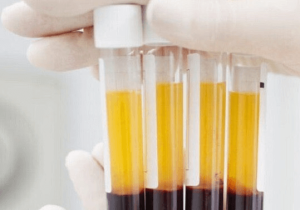No products in the cart.
ELISA Sample preparation Guide
Introduction
ELISA Sample preparation Guide are general guideline for preparing some routine samples for use in ELISA Tests. You need to confirm your own methods because this guide is our internal methods that may be not compatible with your methods. Like all other aspects of ELISA assay set up, ELISA sample preparation procedures will vary depending on the target and assay of interest. If you use an especial ELISA kit, just see its Insert to find what types of samples you can use and how you can prepare your sample. Also, preparation of samples for ELISA tests needs especial consideration to Hook effect, interference, cross reaction, analyte stability and etc that may lead to false positive or false negative results. In some cases you will need to use especial ELISA sample Diluent, ELISA HAMA Blockers or assay buffers.
ELISA Sample preparation methods
How to prepare Plasma Samples for ELISA
Collect whole blood into anti-coagulant containing tube, (sodium citrate, EDTA, Heparin)
- Centrifuge at 3,500 rpm for 15 min at 4°C-18°C.
- For some peptides and analytes, you can store plasma samples for a week in the refrigerator. But for some other specimens you need to keep your plasma in -20°C or even -80°C.
- Do not use hemolyzed samples, lipemic samples, high bilirubin containing samples and icteric plasma specimens for ELISA tests because they interference with ELISA reagent / ELISA buffers and may result in false positive or false negative results.
- For these samples, immediately aliquot supernatant (plasma) to 300—500 μL volume, attach proper labels and keep samples at frozen. Avoid repeated freeze/thaw cycles.
ELISA Sample preparation Guide
How to prepare Serum Samples for ELISA
- Collect whole blood in untreated sample collection tubes.
- Put samples in 37°C batch for 30 min or at room temperature for 40 min.
- Centrifuge at 3,000 rpm for 15 min at 4°C – 18°C
- For some peptides and analytes, you can store plasma samples for a week in the refrigerator. But for some other specimens you need to keep your plasma in -20°C or even -80°C.
- Do not use hemolyzed samples, lipemic samples, high bilirubin containing samples and icteric plasma specimens for ELISA tests because they interference with ELISA reagent / ELISA buffers and may result in false positive or false negative results.
- For these samples, immediately aliquot supernatant (plasma) to 300—500 μL volume, attach proper labels and keep samples at frozen. Avoid repeated freeze/thaw cycles.

ELISA sample preparation
Cell culture supernatant as a sample for ELISA tests
- Before starting your test make sure that Bovine immunoglobulins and BSA do not adverse reaction with your buffers.
- Pipette cell culture media into a centrifuge tube and centrifuge at 1,800 rpm for 15 min at 4°C.
- Immediately aliquot supernatant (plasma) to 300—500 μL volume, attach proper labels and keep samples at frozen. Avoid repeated freeze/thaw cycles.
ELISA Sample preparation Guide
Cell extract as an ELISA Sample
- Place tissue culture plates on ice during sample preparation.
- Gently add wash buffer to cells which is normally a cold PBS, PH 7.4 and aspirate. (2X)
- Aspirate PBS and add 0.5 mL complete extraction buffer per 100 mm plate.
- Add 2-5 ml PBS.
- Vortex severely and incubate on ice for 15-30 min.
- Centrifuge at 13,000 rpm for 10 min at 4°C to pellet insoluble contents.
- Immediately aliquot supernatant (plasma) to 300—500 μL volume, attach proper labels and keep samples at frozen. Avoid repeated freeze/thaw cycles.
ELISA Sample preparation Guide
Preparation of ELISA Sample from Cell cultures contains Animal serum.
- Place tissue culture plates on ice during sample preparation.
- Gently add wash buffer to cells which is normally a cold PBS, PH 7.4 and aspirate
- Remove growth medium and wash very gently with a few mL of cold PBS. Repeat wash step. (3-5X)
- Remove the last PBS wash and gently add 0.5 ml lysis buffer and 2-5 ml PBS.
- Incubate 1-2 hours.
- Pipette medium into a centrifuge tube and centrifuge at 4,500 rpm for 15 min at 4°C.
- Immediately aliquot supernatant (plasma) to 300—500 μL volume, attach proper labels and keep samples at frozen. Avoid repeated freeze/thaw cycles.
How to use Milk as an ELISA sample
- Collect samples and centrifuge at 10,000 x g for 10 min at 4°C.
- Immediately aliquot supernatant (plasma) to 300—500 μL volume, attach proper labels and keep samples at frozen. Avoid repeated freeze/thaw cycles.
Urine as an ELISA Sample
- Collect samples and centrifuge at 10,000 x g for 5 min at 4°C.
- Immediately aliquot supernatant (plasma) to 300—500 μL volume, attach proper labels and keep samples at frozen. Avoid repeated freeze/thaw cycles.
Saliva as an ELISA Sample
- Collect samples and centrifuge at 10,000 x g for 5 min at 4°C.
- Immediately aliquot supernatant (plasma) to 300—500 μL volume, attach proper labels and keep samples at frozen. Avoid repeated freeze/thaw cycles.



